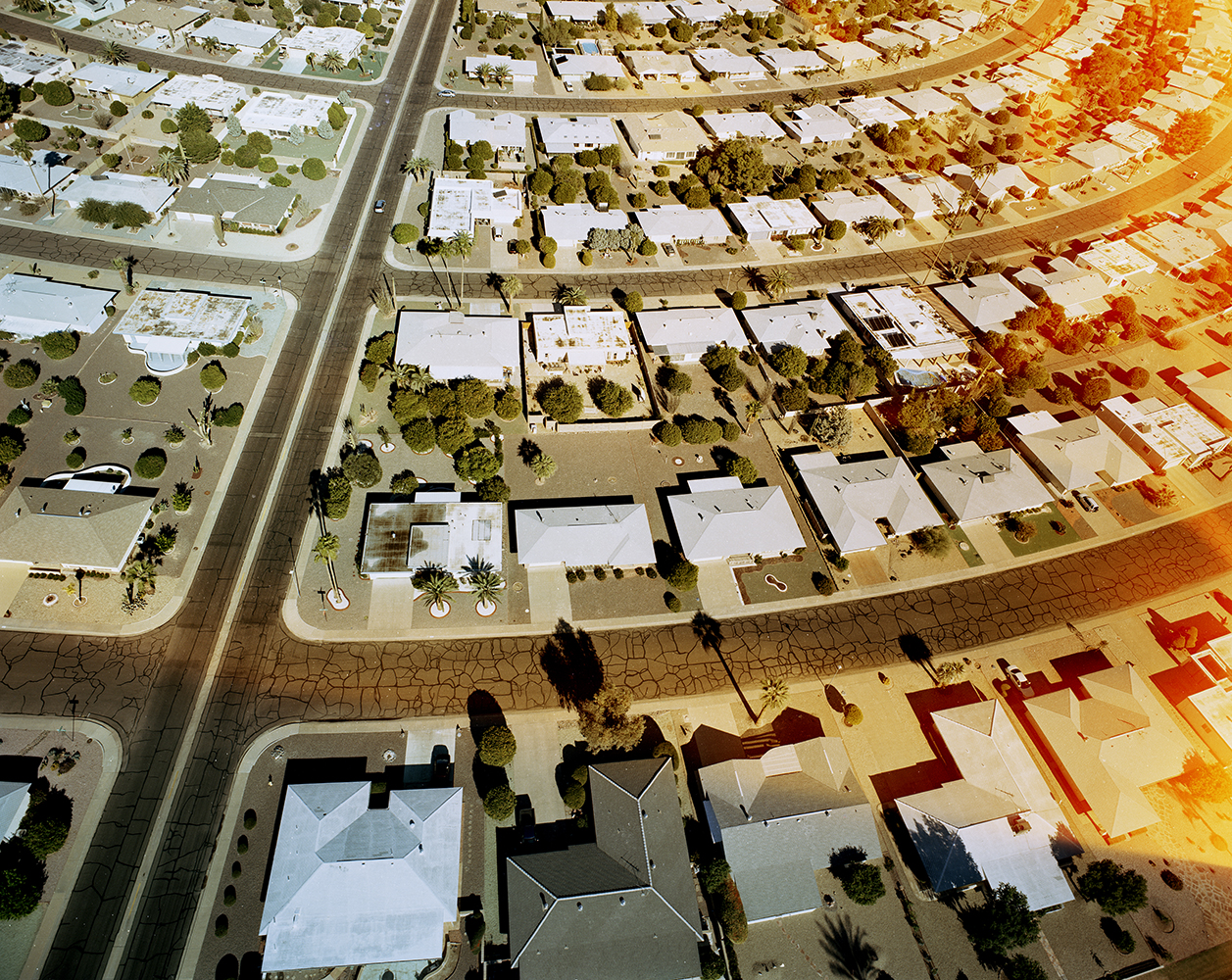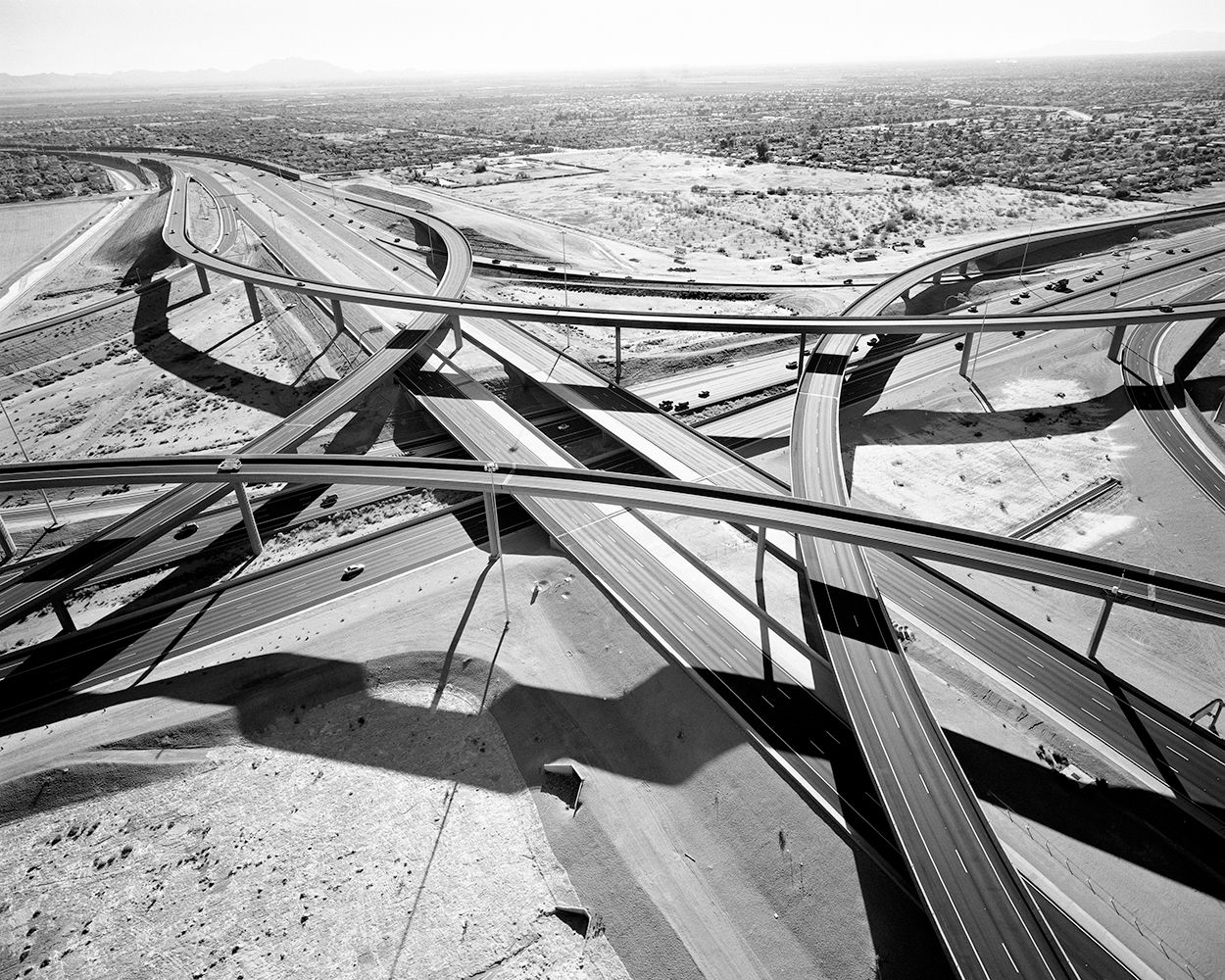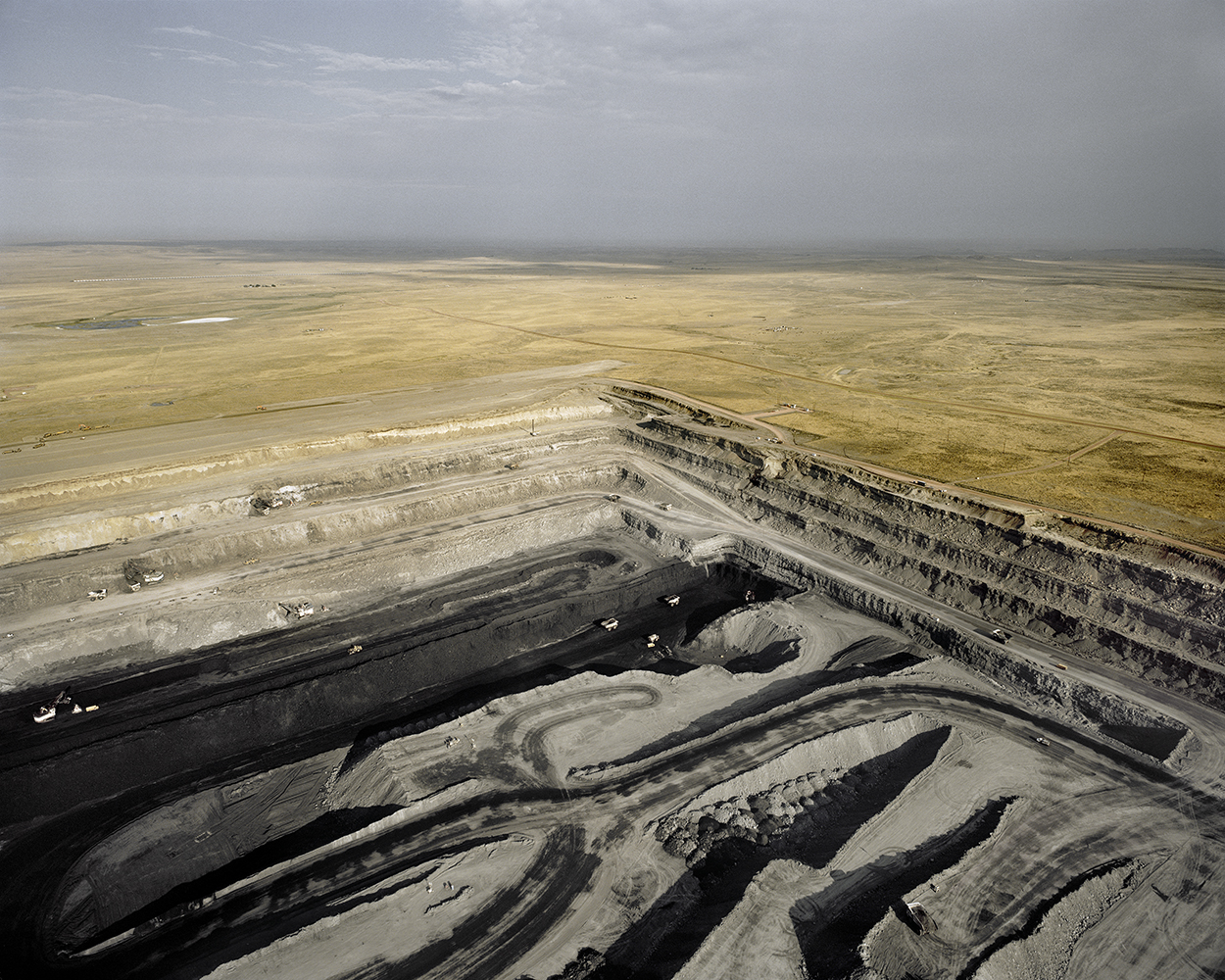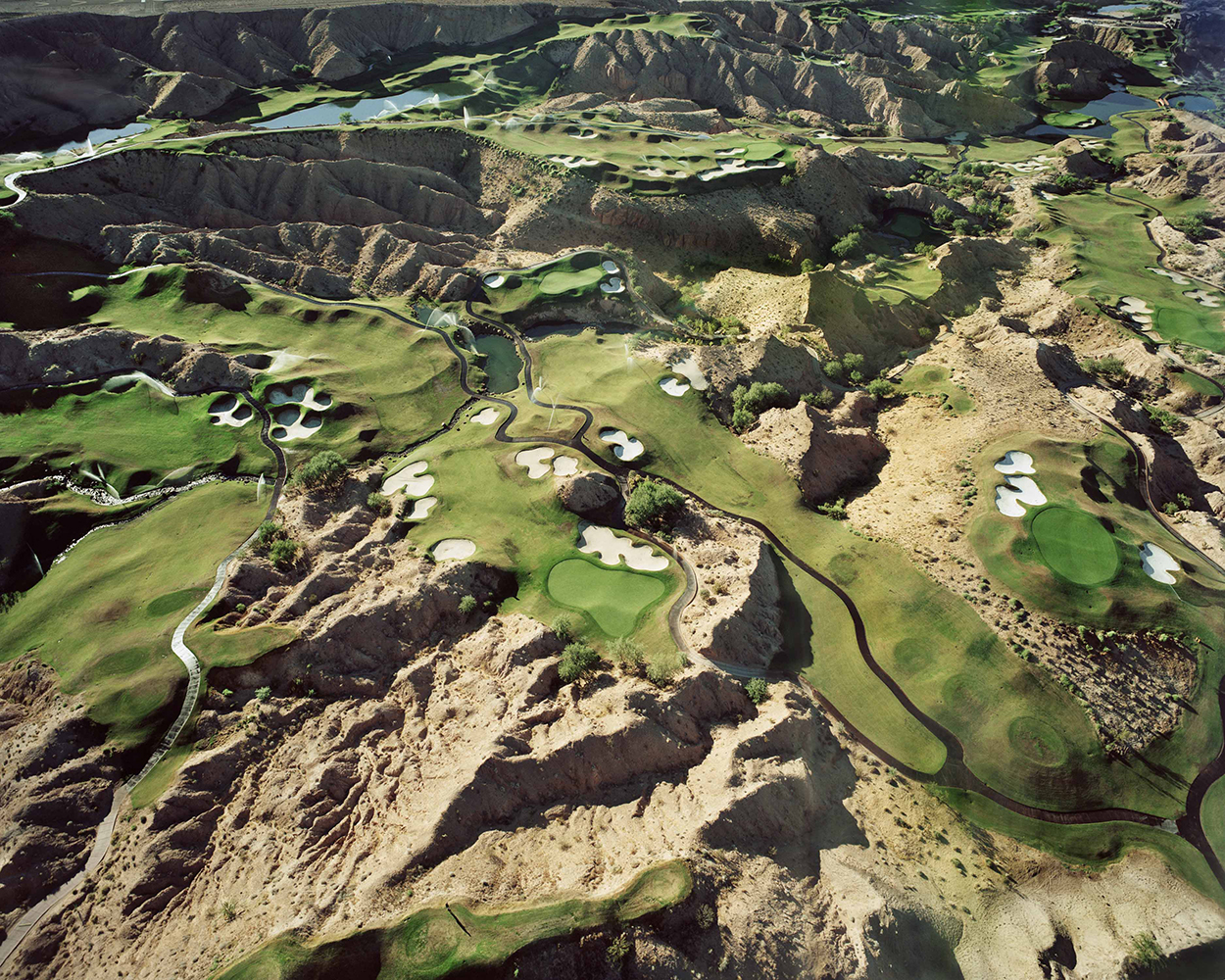Michael Light
Some Dry Space: An Inhabited West
April 7 - May 1, 2011
For the last fifteen years, artist Michael Light has aerially photographed settled and unsettled areas of American space, pursuing themes of mapping, vertigo, human impact on the land, and various aspects of geologic time and the sublime. In this ongoing series, Light focuses on the vast American West, where the wide-open skies offer a particularly clear light ideally suited for aerial perspectives. From high above, he captures landscapes that have become increasingly urban and far removed from their once entrenched mythologies.
"For the last decade, I have been imaging over densely settled cities in the West as well as its more open areas, seeking to reveal what we do as a people and the enduring geological realities of where we do it. I use a hand-held large-format film camera and I have learned to fly a small aircraft and image at the same time with the help of an assistant. Over cities, where there is more aerial traffic and complex airspace, I work with small rented helicopters and happily leave the flying to others."
Some Dry Space: An Inhabited Desert features both color and black-and-white large-format prints, in addition to several mammoth handmade artist books displayed on custom tripods.
Michael Light is a San Francisco-based photographer and bookmaker. Light has exhibited extensively nationally and internationally, and his work is in the collections of the San Francisco Museum of Modern Art, The Getty Research Library, The Los Angeles County Museum of Art, The New York Public Library, and the Victoria & Albert Museum in London, among others. A private pilot, he is currently working on an extended aerial photographic survey of the inter-mountain Western states, and in 2007 won a John Simon Guggenheim Foundation Fellowship in Photography to pursue this project. Radius Books has published the first two books of a planned multi-volume series of this work: BINGHAM MINE/GARFIELD STACK in Fall 2009, and LA DAY/LA NIGHT in Spring 2011. Light is also known for reworking familiar historical photographic and cultural icons with a landscape-driven perspective by sifting through public archives. His first such project, FULL MOON (1999), used lunar geological survey imagery made by the Apollo astronauts to show the moon both as a sublime desert and an embattled point of first human contact. His most recent archival project, 100 SUNS (2003), focused on the politics and landscape meanings of military photographs of U.S. atmospheric nuclear detonations from 1945 to 1962.





